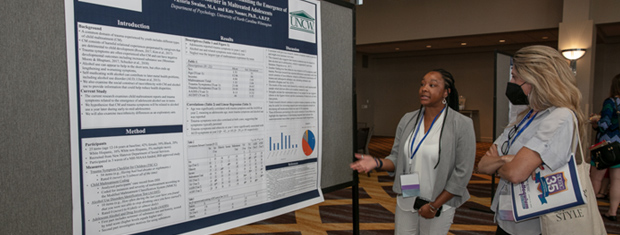




The APSAC Advisor is a peer reviewed quarterly news journal for professionals in the field of child abuse and neglect.
The APSAC Advisor provides succinct, data-based, practice-oriented articles that keep interdisciplinary professionals
informed of the latest developments in policy and practice the field of child maltreatment. It is designed to highlight
best practices in the field and publish original articles and current information about child maltreatment for professionals
from a variety of backgrounds including medicine, law, law enforcement, social work, child protective services, psychology,
public health and prevention in the U.S.
 If you wish to learn more about submitting an article to the Advisor, please click here.
If you wish to learn more about submitting an article to the Advisor, please click here.
This library contains Advisor issues dating back to the first issue in 1988. The most recent issue appears at the top.
Scroll down to select past issues by year and issue number. Once a publication appears in the box, you
can use the Enlarge button to open the document in a new window or tab (depending on how your browser is set up).
This will allow you to view the document with larger print.
To print a document, first use the Enlarge button to open the document in a new window or tab. Then use your browser's Print command.
To return here from a new tab, close the tab. To return from a new window, click your browser's Back button.
In the listing below, click on a year and issue number to see the articles in that publication.
1996 Number 2
Fantastic Elements in Child Disclosure of Abuse
To most forensic evaluators in the field of child abuse treatment and assessment, the issues raised by fantastic elements in disclosure are wrenching ones. Implausible details raise the possibility that an entire abuse disclosure is (or can be attributed to) fantasy.
Religious beliefs can foster, encourage, and justify child abuse, yet religious motivations for child abuse and neglect have been virtually ignored by social science researchers and the public.
Should Parents Be Told When a Convicted Child Molester Moves in Next Door?
Child molestors pose a continuing threat to children, and prison is the only safe place for some sex offenders (Salter,1995). Yet incarceration lasts only so long, and nearly all convicted child molesters eventually return to the community. State governments faced with the prospect of repeat sex offenders responded with three new legislative approaches.
Current Trends in Child Abuse Reporting and Fatalities: NCPCA’s 1995 Annual Fifty-State Survey
The number of reported and substantiated cases of child abuse remained high last year, based upon data collected by the National Committee to Prevent Child Abuse (NCPCA) as part of its annual survey of child welfare administrators.
Measuring Post-Traumatic Stress Disorder: The Children’s Impact of Traumatic Events Scale Revised
To enhance our understanding of sexual abuse sequelae, researchers and clinicians require reliable, valid assessment tools that are theoretically meaningful and tap abuse- specific symptoms Research has identified two symptom clusters specifically linked to sexual abuse: post-traumatic stress disorder (PTSD) and sexuality problems (Wolfe & Birt, 1996), highlighting the need for adequate assessment strategies in these areas.
The purpose of Journal Highlights is to alert readers to current literature on child abuse. Selected articles from journals representing the variety of disciplines reflected in APSAC's membership are presented in the form of an annotated bibliography.
APSAC Advisor 9(2): Full Issue